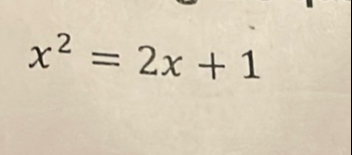AI tutor
Full solution
Q. Solve.
- Identify Equation Type: Identify the type of equation. The equation is a quadratic equation in the form of .
- Rewrite in Standard Form: Rewrite the equation in standard form by subtracting and from both sides to get .
- Factor or Use Quadratic Formula: Attempt to factor the quadratic equation, if possible. In this case, the equation does not factor nicely, so we will use the quadratic formula instead. The quadratic formula is , where , , and .
- Calculate Discriminant: Calculate the discriminant, which is the part under the square root in the quadratic formula: . Here, it is .
- Insert Values into Formula: Insert the values of , , and into the quadratic formula to find the solutions for . .
- Simplify Solutions: Simplify the solutions. Since , the solutions are .
- Final Simplification: Further simplify the solutions by dividing each term by . The final solutions are .

